Have you ever looked at your furry little friend and wondered what the world looks like through their eyes? Do they see in color? Guinea pigs (cavia porcellus) have some of the most fascinating visual capabilities in the rodent family and have a pretty special way of viewing the world.
So, can guinea pigs see in color? They most certainly can, although their vision is only dichromatic compared to a human’s trichromatic vision.
This means that they only have two types of functioning color receptors in their eyes to distinguish color in their environment.
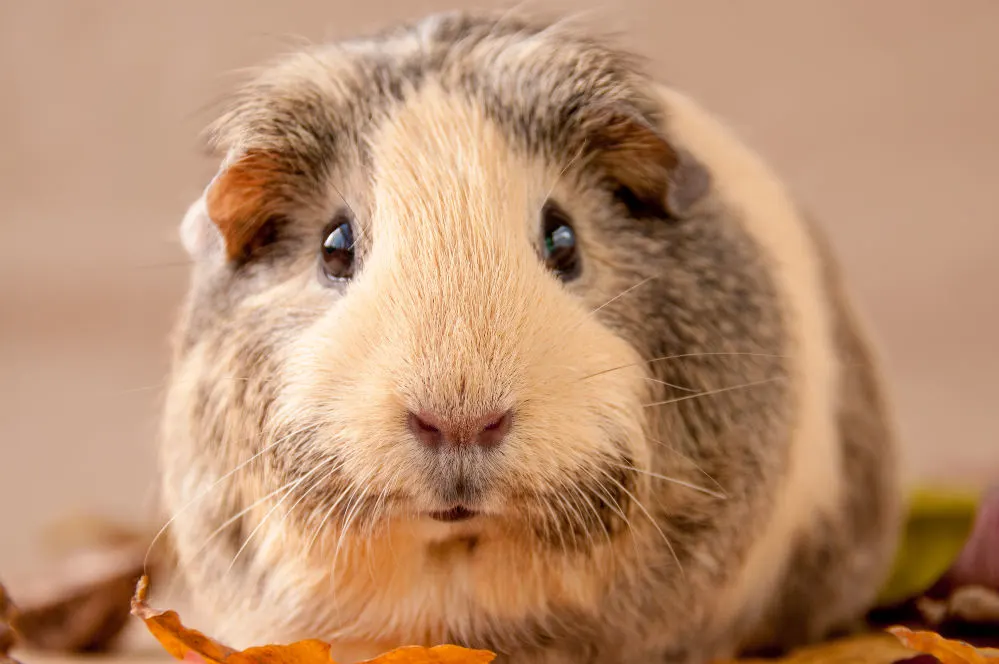
What does this mean for your guinea pig’s perspective, and does this affect how they see in their cage? Keep reading to discover more about your cavy’s impressive set of eyes to ensure that you have set up the best cage for your guinea pigs.
Colors through a guinea pig’s eyes
During the initial stages of guinea pig vision research, scientists first assumed that their dichromatic vision only allowed cavies to see two primary colors.
Yet, as the years and studies progressed, it was discovered that a guinea pig could potentially see and distinguish between many different colors.
So, a guinea pig’s dichromatic vision allows them to distinguish between different colors, like blue or yellow. It doesn’t mean they can only see those two colors. This is thanks to your cavy’s functioning color receptors, also known as photoreceptor cells or cone cells.
Because of this limited number of cone cells, a guinea pig’s color distinction is not as strong as a human beings’. As for how many colors a guinea pig can see, that answer is yet to be exactly determined. It is suggested that cavies can see blue and yellow easily enough, although the jury is still out as to whether they can see red.
Scientists have also discovered that guinea pigs have a sensitivity to the color green, though this could be due to its association with their main food (grasses and hay).
It is also thought that albino or white guinea pigs have a greater color perception due to their eyes’ heightened light sensitivity.
How do scientists know that a guinea pig’s vision can detect different colors?
Guinea pigs’ dichromatic vision has been under research for many years and continues to gain interest.
While initial scientific studies thought that guinea pigs have poor vision, with only the ability to discern two colors, many have discovered that your cavy’s vision is actually much more complex.
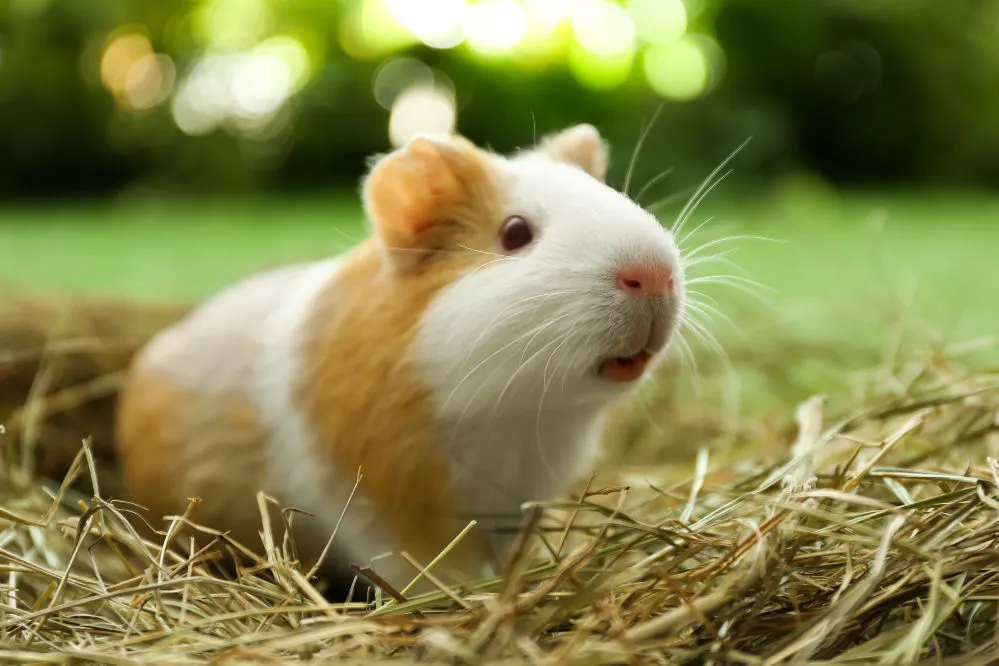
One such study which illuminated this included some tasty lettuce and a bowl. As lettuce is mostly odorless, scientists hypothesized that guinea pigs would have to resort to associating colors with food as they would not be able to sniff out the lettuce.
In this study, scientists placed the odorless lettuce into a red bowl in a line-up with other differently colored bowls.
They consistently kept the lettuce in this bowl, even when shuffling the order of the bowls, to see if guinea pigs would consistently recognize which bowl the lettuce was in.
As the guinea pigs always recognized the red bowl as the lettuce bowl, this shows that guinea pigs can be trained to associate food with certain colors. In order to do this, it must mean that they are able to distinguish between colors.
Do scientists know if guinea pigs have a favorite color?
Other tests have been conducted to test whether guinea pigs have color preferences. The most well-known test was not conducted by scientists, though.
A group of students conducted this study with four guinea pigs (three females and one male) to determine if they favored one color more than others.
As with the first study, the students set out four different colored bowls and water bottles (red, yellow, green, and blue). They also set out a black bowl every now and then and made sure to serve an equal portion in each bowl for three months.
At the end of the study, the students discovered that the guinea pigs seemed to favor the yellow bowl for food and the blue bottle for water. They almost entirely avoided the black bowl and did not seem to favor the green as expected.
But, this study isn’t exactly proof of color preference as the students did not utilize enough guinea pig test subjects.
The study would have also been more reliable if their test subjects varied more in age and gender, with less influence over each other.
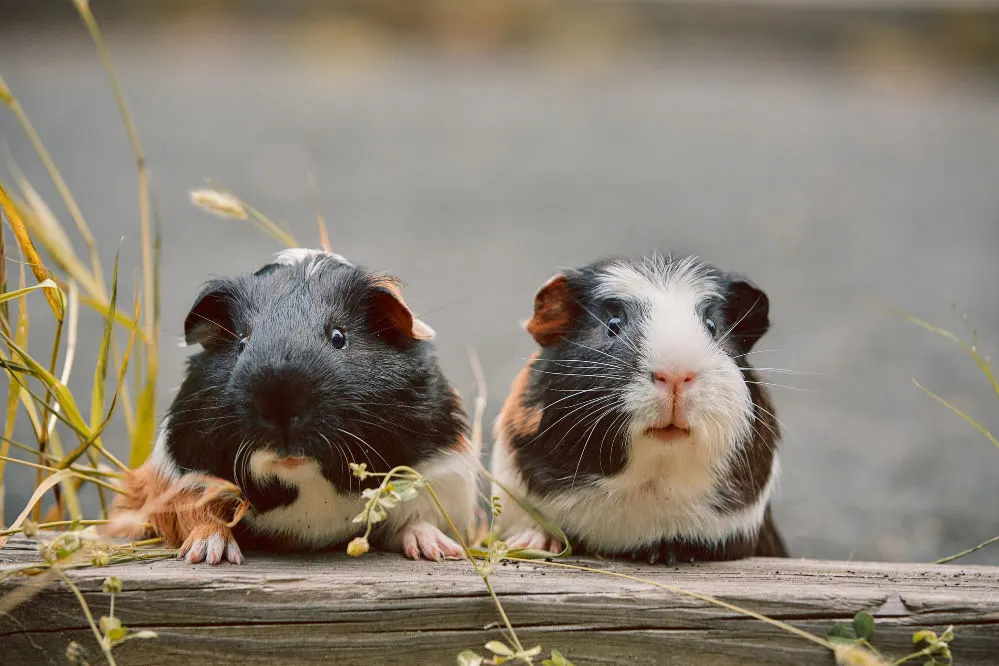
While scientists do know that guinea pigs seem to be more responsive to brighter colors, like yellow, this does not necessarily mean that your cavy loves yellow. Brighter colors are simply easier for their photoreceptor cells to detect in their environment.
Whether they actually have a favorite color is yet to be determined, although there is no harm in adding some brighter colors to your cavy’s home. Some guinea pig owners have even reported that their cavies seem drawn to their colored nail polish or brightly colored hideouts.
So, while you might not know if your cavy prefers bright pinks over oranges, it won’t hurt to look out for some colorful bowls or even brightly colored bedding for your guinea pig.
How does dichromatic color vision help guinea pigs?
Guinea pigs are prey animals, which means that most of their senses have adapted to aid them in the wild. And while a guinea pig’s color distinction is weaker because of their limited cone cells, this doesn’t mean that they necessarily have poor eyesight.
True enough, they have very poor depth perception and can only see things that are about four feet in front of them. But because of the placement of their eyes on the side of their head, they have a 340-degree vision.
This means they can see what’s to the side, what’s above them, and nearly everything that’s behind them without moving their head. They do have a small blind spot directly behind their head and maybe a small one directly in front.
However, some studies have suggested that cavies can see up to 33 images per second, in comparison to a human’s ability to see 22 images per second. This means that their visual sensitivity to dynamic movement is incredibly heightened, and better than most animals even.
So, when your cavy’s ancestors were braving it through the Andes in South America, they needed their dichromatic vision to detect predators and food.
Their slightly weak color distinction wouldn’t have hindered their activities as they only need to see enough to detect movement and possible food sources.
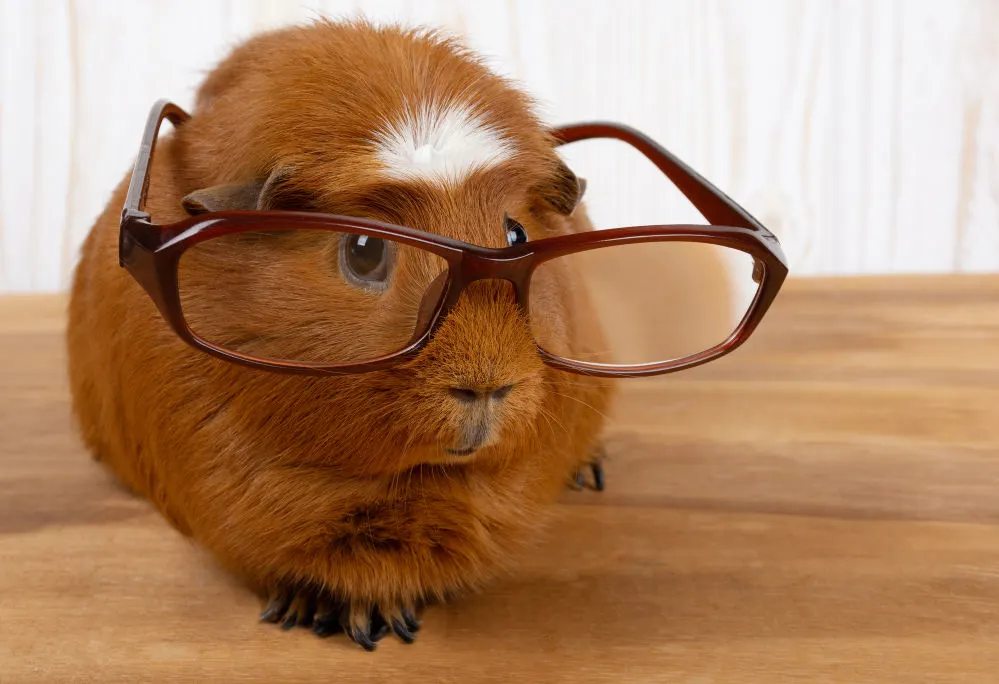
If their eyesight were any better, it may have made their lives more difficult. Knowing that guinea pigs are easily startled, imagine your tiny cavy seeing a dog in full clarity less than 12 inches (30.5 cm) away. No pet owner wants that kind of stress for their furry friends, so their dichromatic vision is more than sufficient for them.
Do guinea pigs have better color vision in the dark?
Despite the fact that guinea pigs are crepuscular animals – meaning they’re active during early morning and evening – the short answer is no, they do not. A 1994 study on the spectral sensitivity of guinea pigs found that cavies have a rod cell sensitivity of about 494 nm.
However, they can only see about three to five inches (7.6 to 12.7 cm) in front of them in the dark.
Rod cells are the photoreceptors in your retinas that are responsible for processing the size and shape of images, especially in dark or dim light. These cells are not, however, capable of detecting color or detail like cone cells. So, much like human eyes, guinea pigs’ eyes need brighter light to better distinguish between colors in the dark.
This is also curated perfectly for the cavy lifestyle, as they rely mainly on their great sense of smell and tiny whiskers to navigate in the dark.
Because they aren’t nocturnal animals, they don’t need good night vision. Instead, they also have an excellent memory and largely rely on this when moving around at night time and in complete darkness to compensate for their lack of depth perception.
Is feeding cavies colorful fruits and veggies better for their dichromatic vision?
While it would be nice to feed them produce with colors they can detect, it is not scientifically proven that a more colorful diet is better for their vision.
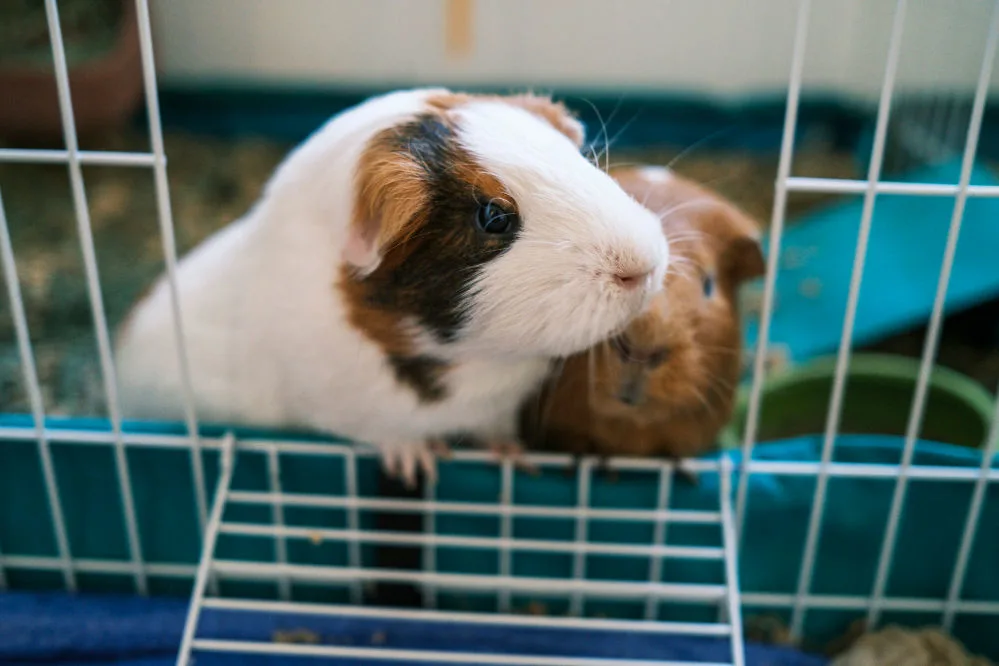
Final thoughts on whether guinea pigs can see in color
Much like indoor rabbits, a guinea pig’s eyesight is neither bad nor good exactly. But it is perfectly suited for their little bodies.
Although their cages are a far cry from the wild mountain ranges that is the natural habitat of guinea pigs, they still rely on their eyesight in their day-to-day activities and their good spatial memory at night.
So, your guinea pig can definitely see in color, though your trichromatic vision and your furry friend’s dichromatic vision means you see the same things differently. This doesn’t mean that you shouldn’t try to make their life a little bit more colorful, though!
Bright colors for their bowls, bed, or bottles are a great place to start with a little visual stimulation, even though the jury is still out as to what color guinea pigs favor. It may be a long time before scientists uncover the full complexity of guinea pig vision, but the research and enthusiasm grow every day.
Steph Dyson is a travel journalist by trade but a lover of all small pets. She’s been a pet mum to everything from gerbils to guinea pigs, rabbits to hamsters, and fish to dogs of all shapes and sizes. She wants to share her years of experience with small pets and make Small Pet Guides the go-to website for pet owners seeking information and care advice.

